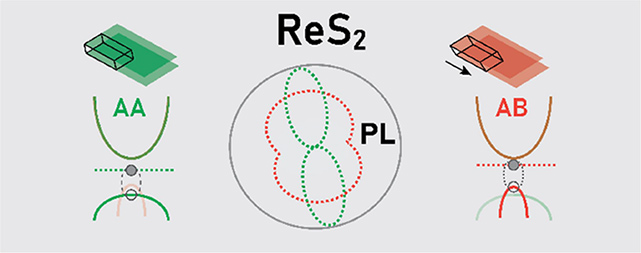Rhenium disulfide, a member of the transition metal dichalcogenide family of semiconducting materials, is unique among 2D van der Waals materials due to its anisotropy and, albeit weak, interlayer interactions, confining excitons within single atomic layers and leading to monolayer-like excitonic properties even in bulk crystals. While recent work has established the existence of two stacking modes in bulk, AA and AB, the influence of the different interlayer coupling on the excitonic properties has been poorly explored. Here, we use polarization-dependent optical measurements to elucidate the nature of excitons in AA and AB-stacked rhenium disulfide to obtain insight into the effect of interlayer interactions. We combine polarization-dependent Raman with low-temperature photoluminescence and reflection spectroscopy to show that, while the similar polarization dependence of both stacking orders indicates similar excitonic alignments within the crystal planes, differences in peak width, position, and degree of anisotropy reveal a different degree of interlayer coupling. DFT calculations confirm the very similar band structure of the two stacking orders while revealing a change of the spin-split states at the top of the valence band to possibly underlie their different exciton binding energies. These results suggest that the excitonic properties are largely determined by in-plane interactions, however, strongly modified by the interlayer coupling. These modifications are stronger than those in other 2D semiconductors, making ReS2 an excellent platform for investigating stacking as a tuning parameter for 2D materials. Furthermore, the optical anisotropy makes this material an interesting candidate for polarization-sensitive applications such as photodetectors and polarimetry.
See also our paper in ACS Photonics
